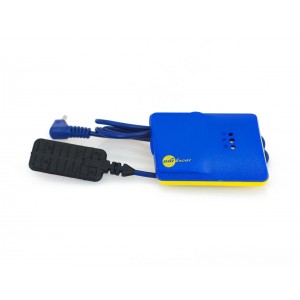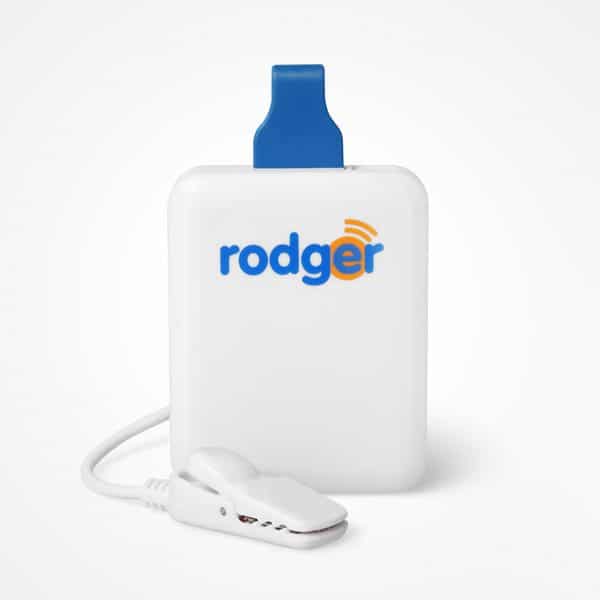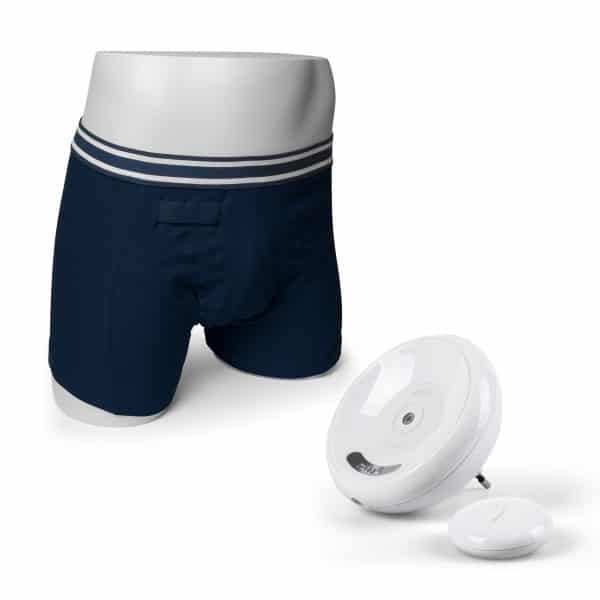An alarm is one of the most effective treatments for nocturnal enuresis.It works by waking the child as soon as the first drops of urine are present , which allows the brain to gradually learn to recognize the signal of a full bladder during sleep.

Choosing an alarm for 5-12 year olds
Our guide to help you find the best compromise for your bedwetting alarm
The 5-12 age group is the most representative of our young customers. Alarms are generally designed for these children. However, some alarms offer very interesting advantages for them. We advise against starting treatment if your child is under 5 years old. Although the treatment can be adapted for a younger child, we believe it is better to let them grow up. Bedwetting is very common in children up to 5 years old. Therefore, alarm treatment is not necessary. We recommend comfort products such as disposable incontinence pads.
A safe and very economical choice

The Anzacare Dri Sleeper Excel alarm is an excellent entry-level option. It's compact, lightweight, and very easy to use. It's a great choice for helping your child learn to recognize a nighttime alarm while maintaining ease of use. It features a single sound and a flexible probe that can be placed in underwear or a diaper cover. It attaches to the shoulder with Velcro. Its small size makes it easy to take anywhere. You'll be surprised by how effective this alarm is. Behind this small device lies years of experience and success in treating bedwetting in children. Like all our alarms, it comes with instructions in French. Furthermore, you benefit from our FREE support before, during, and after treatment.
Some families will prefer alarms with vibrations.

The Rodger Clippo alarm is identical to the first but also offers a range of 8 random ringtones as well as vibration. It is slightly larger than the Dri Sleeper Excel and attaches to the shoulder with a magnetic clip. You can select between three modes.
- Sounds and Vibrations
- Vibes
- Sounds
The use of vibrations makes it possible to treat children even during the day or for greater discretion when they go on school trips.
Generally, using one or more ringtones will not affect the quality of the treatment. Ringtone combinations are a recent feature on alarms, and all studies have been conducted on alarms with only one ringtone.
The points to consider are:
- A high-quality sound level and sounds designed for their ability to wake young children
- A highly responsive probe. The faster the probe detects urine, the faster the treatment will be. We advise you to choose only high-quality alarms to obtain good results and avoid discouraging your child with inconsistent results.
- We advise against using alarms that use a mattress as a sensor, or one on which the child sleeps. These are very fragile and give false readings due to children's perspiration.
only offers alarms that have been tested and guarantees products that comply with the latest health regulations.
Our Best Seller:

We particularly like the Rodger Wireless Alarm with integrated underwear probe. It's popular with children.
- Freedom of movement, no shoulder straps
- No connection between the child and the alarm
- Easy to use, the child puts on the underwear like regular underwear. They can even be worn during the day. When you want to activate the detection, simply clip the sensor onto it. Convenient for travel (car, train, plane, etc.).
- 8 random ringtones
- Optional vibration module (places under the mattress or pillow)
- Option to add a second module in the parents' bedroom.
- The alarm works on mains power or batteries.
Wireless technology is very convenient. The treatment is more effective because the child has to get up to turn off the alarm (on the wall or a bedside table). Therefore, there is no risk of them falling back asleep. The alarm comes in a basic model with two pairs of underwear, a transmitter, and a receiver. We advise all parents to stay with their child during the first few nights to correct any mistakes and ensure everything is going smoothly.
Tips for buying a bedwetting alarm
Bedwetting alarms are very easy to use. Children will have no trouble getting to grips with them. There are no specific requirements, other than waiting until your child is at least 5 years old. We offer kits that include all the equipment necessary for a complete treatment. We are, of course, available to answer your questions and help you choose the right one.
It is important to consider these points before any treatment:
- What does your child normally wear to sleep?
- How often do you do laundry?
- Do you wish to treat more than one child at a time?
- Does your child prefer an alarm that attaches to the shoulder or one that sits on a bedside table or desk?
- Does your child sleep alone?








Latest comments